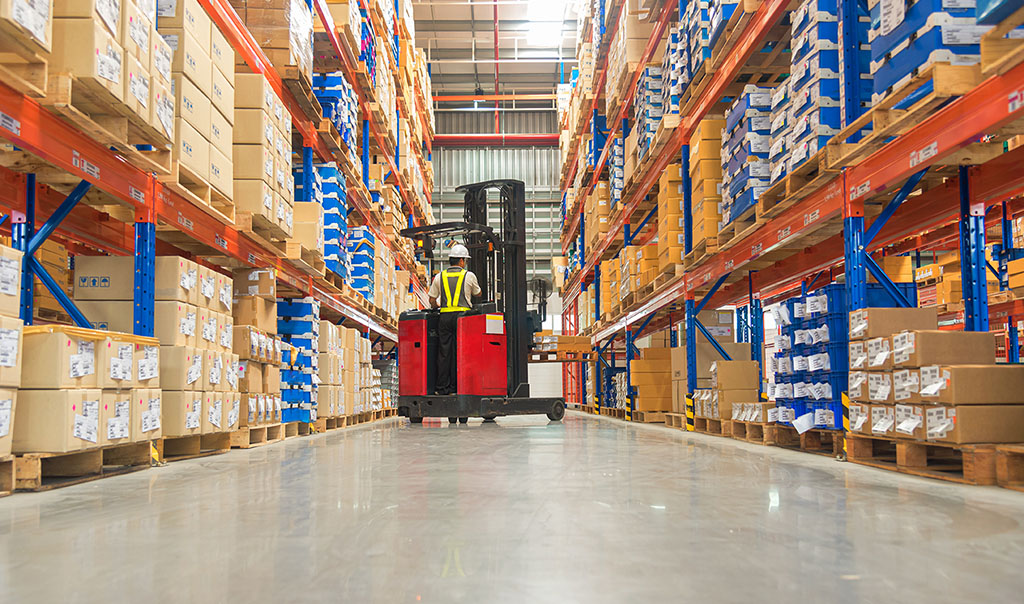5 Key Challenges and Strategies for Managing Wholesaler and Distributor Warehouse Risks

Wholesalers and distributors working in industries like furniture, textiles, electronics and food and beverage understand that a safe and secure warehouse is ideal for stocking, processing, packaging, distributing and shipping products. Adopting proactive risk management strategies in your warehouse and other facilities can help safeguard items against exposures while they await their next move in the supply chain.
Strategies for managing warehouse risks
1. Fire risk
Fires are a significant concern for warehouse owners and operators, and they can arise from any number of sources, including high-challenge storage, such as flammable liquids, plastics and aerosols. Data from the U.S. Fire Administration estimates $3.7 billion in damages in 2021 from nonresidential building fires.1 A spark from hot work, faulty wiring or lighting can cause enough heat to ignite pallets, boxes and inventory stored in a warehouse.2 Improperly moving combustible materials can create a static charge that can potentially lead to fire.3 Understanding and following local and federal fire suppression guidelines from the Occupational Safety and Health Administration (OSHA) is one of the ways to mitigate fire risk.4
2. Theft
Warehouses can be vast spaces filled with valuable products, making them potential targets for thieves.
Inventory loss due to theft is a major risk for wholesalers and distributors, with an estimated $223 million in goods reported stolen from warehouses or transport trucks in 2022 across the U.S. and Canada.5 Cargo theft prevention tactics can help to limit exposure and include adopting or installing:
- Secured access such as employee identification cards.
- A visitor and vendor sign-in process and regular audits.
- Exterior gates, fencing and lighting.
- Regular security patrols and closed-circuit television (CCTV) system checks.
- Properly secured windows and vegetation control around facilities.
3. Water damage
Water damage in a warehouse facility can stem from a number of causes. Burst pipes, leaks, broken HVAC systems and weather-related issues can lead to product damage. Water can also impact building materials and equipment and result in mold or large-scale structural damage, leading to costly repairs, delays in order fulfillment and customer dissatisfaction. It is crucial to regularly inspect your facilities, including HVAC units, water pipes, drainage and roofing to identify water leaks before they happen.
4. Product damage
Keeping inventory safe until it moves on to a new destination is a crucial task for a warehouse operator. How items are stored can affect that success; improper storage and handling can make inventory vulnerable to scratches, dents, breakage or spoilage, resulting in the need for replacements or refunds. In refrigerated warehousing, having contingency plans for maintaining refrigeration is paramount to reduce the severity of product damage due to spoilage.
5. Equipment breakdown
Wholesalers rely on warehouses to stack, store and retrieve product. When the machinery used for those functions fails, the result is a potential for product damage, employee injury or financial loss from downtime. Conveyers, forklifts and overhead hoists can be essential to moving inventory and require a solid maintenance and repair plan. Facilities can reduce the impact from a breakdown with regular equipment inspection and maintenance schedules, and by addressing any concerns reported by employees as they occur.
Wholesalers and distributors who are very conscious of exposures in their warehouses and take the right steps to reduce risks could minimize their potential for loss. However, accidents happen, so it is extremely important to have the right insurance coverage plan in place. A coverage plan designed to protect against the unique risks associated with a warehouse and its operations is essential to helping minimize business disruptions when losses occur.
To learn more about the coverages and services available for wholesalers and distributors, contact your insurance agent.
Sources
1 https://www.usfa.fema.gov/statistics/nonresidential-fires/
2 https://www.travelers.com/resources/business-topics/facilities-management/fire-hazards-in-the-workplace
3, 4 https://www.osha.gov/sites/default/files/2019-03/fireprotection.pdf
5 https://www.freightwaves.com/news/cargo-thefts-spike-15-across-us-canada-in-2022



